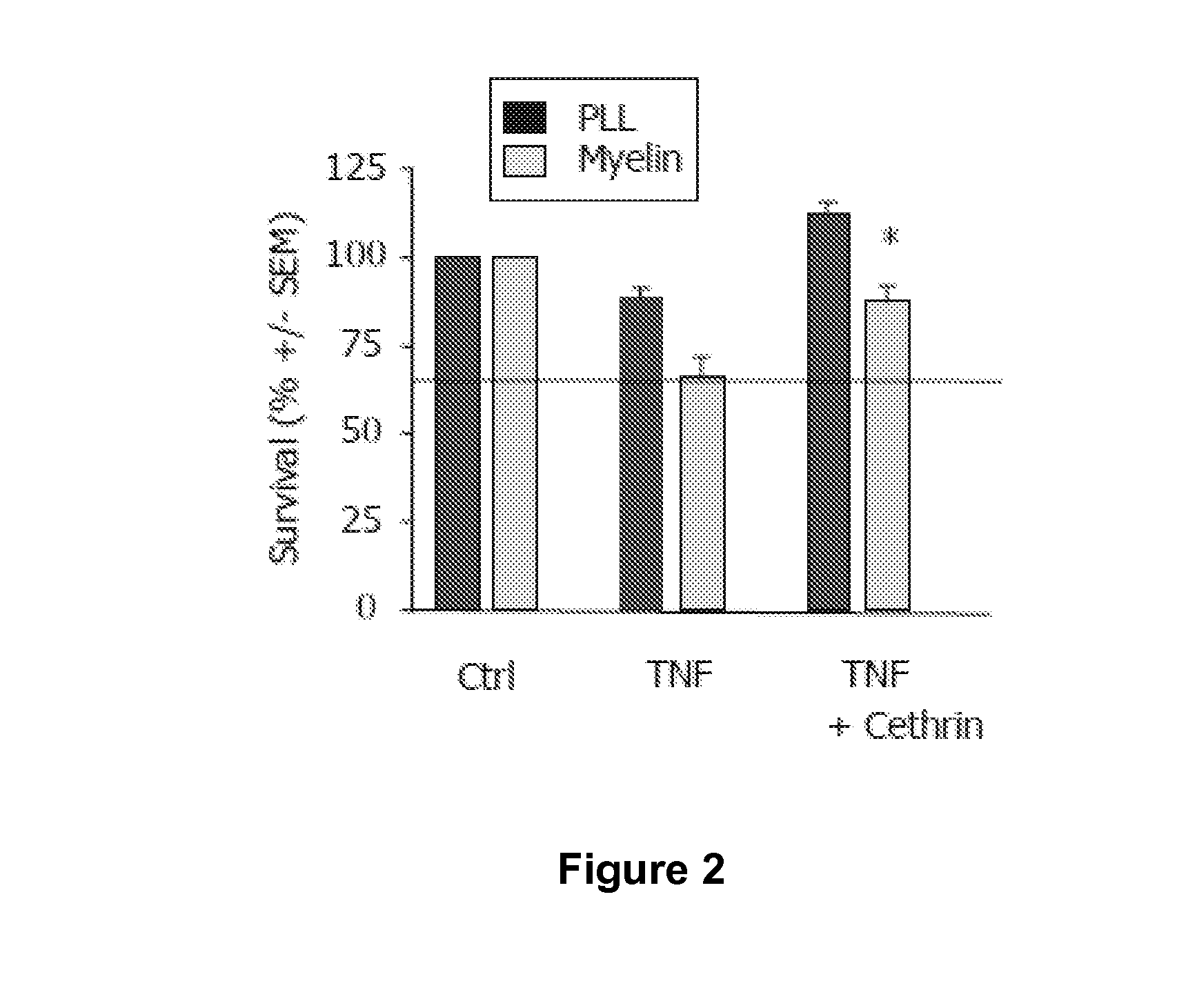Inhibition of rho and or rock and cell transplantation
a technology which is applied in the field of inhibition of rho and rock and cell transplantation, can solve the problems of difficult cell viability during processing, no human use approved therapies, and insufficient acquiring of cells, so as to improve the viability of transplanted cells, and reduce the tumorigenic potential of transplanted cells
- Summary
- Abstract
- Description
- Claims
- Application Information
AI Technical Summary
Benefits of technology
Problems solved by technology
Method used
Image
Examples
example 1
Demonstration that BA-210 Attenuates the Immune Response after Spinal Cord Injury
[0090]ED-1 immunoreactivity is used to measure the number of monocytes that invade an injured spinal cord in studies of rat contusion SCI. To determine whether BA-210 affects the infiltration of hematogenous macrophages after CNS injury, we studied contusion injury in rat spinal cord tissue. Female Sprague-Dawley rats weighing 180-200 g were subjected to contusive injury of the thoracic spinal cord using New York University MASCIS impactor under isoflurane anesthesia. After a laminectomy at T7, a 10 g weight was dropped onto the dura mater from a height of 50 mm Immediately after spinal cord injury, 50 μg of BA-210 were added in admixture with Tisseel VH fibrin sealant (ImmunoAG, Vienna Austria) to the region of spinal cord injury. Control animals were injured and treated with PBS mixed in fibrin sealant. The incision was closed by suturing the muscle and fascia and the skin was closed with staples. At ...
example 2
The Effect of Combined Myelin and Inflammation on Cell Survival and Ability of BA-210 to Improve Cell Survival in the Presence of Tumor Necrosis Factor (TNF-α)
[0091](a) Survival of PC-12 cells plated on poly-L-lysine (PLL) or myelin (Myelin) substrates. Bars represent mean+ / −S.E.M., asterisk p<0.05. Apoptosis was induced by treatment with TNF-α and controls cultures (Ctrl) were left untreated. Combined myelin and TNF-α treatment induces cell death. BA-210 significantly increases cell survival in the presence of TNF-α and myelin.
example 3
BA-210 is Cytostatic for Glioblastoma Cells
[0092]Current available models of gliomas include in vitro cell lines derived from human malignant gliomas such as the SF-268 cell line. The SF-268 glioma cell line was grown RPMI 1640 cell culture media according to manufacturer's instructions and pH adjusted to 7.10+ / −0.10. A cell suspension of 20,000 cells / mL was prepared and cells were added to 8 well-chamber slides previously coated with 10 μg / mL of poly-L-lysine. After treatment with various concentrations of BA-210 for 72 hours, cell proliferation was assessed by a Sulforhodamine B (SRB) protein staining assay for the in vitro measurement of cellular protein content. This assay was developed and subsequently adopted for routine use in the National Cancer Institute for in vitro antitumor screening. The SRB binds to basic amino acids of cellular protein, and colorimetric evaluation provides an estimate of total protein mass which is related to cell number. This assay is based on the as...
PUM
| Property | Measurement | Unit |
|---|---|---|
| Time | aaaaa | aaaaa |
| Time | aaaaa | aaaaa |
Abstract
Description
Claims
Application Information
 Login to View More
Login to View More - R&D
- Intellectual Property
- Life Sciences
- Materials
- Tech Scout
- Unparalleled Data Quality
- Higher Quality Content
- 60% Fewer Hallucinations
Browse by: Latest US Patents, China's latest patents, Technical Efficacy Thesaurus, Application Domain, Technology Topic, Popular Technical Reports.
© 2025 PatSnap. All rights reserved.Legal|Privacy policy|Modern Slavery Act Transparency Statement|Sitemap|About US| Contact US: help@patsnap.com



